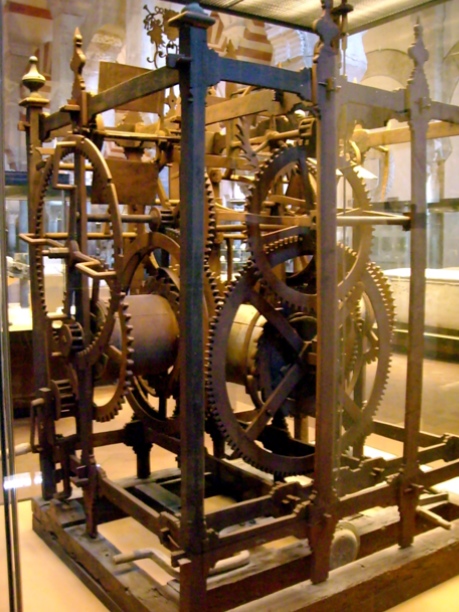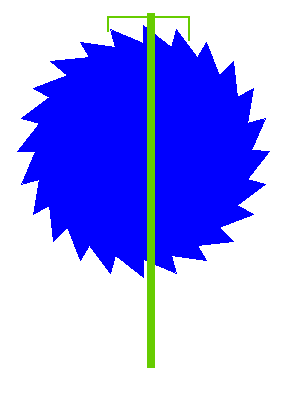 Clocks
Clocks Clocks
Clocks
Instruments that changed the way humankind was capable of organizing time by segmenting duration into ever smaller units of measure.
originated in China | Passed to Damascus & the west | Spanish mechanism | Strasbourg automata | essential parts | Pursell | effect on time | what is time?

The Prague Astronomical Clock is one of the oldest European clocks of its kind (the first ever originated in Padua in 1344 and a second in Strassburg in 1354) and continues to hold its exceptional position. It is unique in being the oldest of those where the original clockwork has been in operation from the beginning to the present time for six centuries, and even the astronomical dial shaped like an astrolabe survives in the original form. Interestingly, the Clock initially showed exclusively astronomical data: as was stressed by Jan Táboský (who was its curator in the years 1551-1572) there were no irrelevant little mechanical figures to entertain the common people but only "the pure art of astronomy".
The internal gearing and escapement mechanisms of the clock allow it to keep accurate time.
| Spanish clock: internal mechanisms. | In an escapement there is a gear with teeth of some special shape. There is also a pallet, and attached to the pallet is the anchor which is used to engage the teeth of the gear. The basic idea that is being demonstrated in the figure is that, for each swing of the pallet back and forth, one tooth of the gear is allowed to escape. For example, if the pallet is swinging toward the left and passes through the center position , then as the pallet continues toward the left the left-hand pin attached to the pallet will release its tooth. The gear will then advance one-half tooth's-width forward and hit the right-hand pin.In advancing forward and running into th pins ,the gear will make a sound ... "tick" or "tock" being the most common.That is where the ticking sound of a clock comes from. Also, the pallet is attached to a balance-wheel which has a balance-spring attached to its axle, which gives it a back and forth motion.
|
 |
|
| Here an escapement mechanism comes into picture. |
|
| One thing to keep in mind is that the pallet will not swing forever. Therefore, one additional job of the escapement gear is to impart just enough energy into the pallet to overcome friction and allow it to keep swinging. To accomplish this task, the anchor and the teeth on the escapement gear are specially shaped. The gear's teeth escape properly, and in addition the pallet is given a nudge in the right direction by the anchor each time through a swing. The nudge is the boost of energy that the pallet needs to overcome friction, so it keeps swinging. | |
In French, "L'Horloge Astronomique", this is one of the largest astronomical clocks in Europe.
The Strasbourg cathedral clock has a long history. The first clock was built in around 1352. This stayed in place for about 150 years until it finally failed.
Work on a replacement began in 1547 but due to the religious turmoil of the time was not completed until some thirty years later. Major modifications / rebuilding work took place again in the 19th century.
The clock is on four main levels and provides a variety of astronomical information. It's accuracy and relation to the position of the "fixed stars" is a remarkable technical achievement in what we call fine technology.
What makes this instrumet such a socially important tourist attraction in Strasbourg is the collection of automata that perform on the various levels. These include a cherub turning an hour glass, another hitting a gong and a figurative representation of the four ages of man. In that respect the clock represents the cultural persuasion of the Roman western chirch --after the Great Schism-- to include mechanical devices in the church itself demonstrating that the timelessness of the omnipotent Creator (God) could be subdivided and measured by a device that also adorned the act of time-keeping with automated figures representing the angels.
"A wonderful clock, said to be superior in mechanism and the variety of its performances to the famed Strasbourg astronomical and apostolic clock," New York Times, June 4, 1880 in a story about a USA version of the timepiece and automata.
Without technical advances neither accurate clocks as time keeping devices nor automated devices could operate with the requisite order to mimic (analog) the movement of the stars in the heavens.
Key components explained (fine technology) of a clock that make it accurate and repairable when it is not.
Verge and foliate
This action of the drum turns a number of gear wheels that are connected in a series called the train. The hands of the clock are attached to individual wheels in the train. Each of these wheels turns at a specific speed. A pendulum and a mechanism called the escapement prevent the weight from being lowered too fast. The pendulum and the escapement also regulate the clock's speed.
Escapement mechanism (Technical component of timepiece technology).
 |
The escapement includes an escape wheel and a verge. The escape wheel is connected to the train and turns when the clock runs. The pendulum, which is the timekeeping device of the clock, swings from side to side at a steady rate. As the pendulum swings, it tilts the verge from side to side. With each tilt, two hooks called pallets--one at each end of the verge--catch on the escape wheel and stop it. When the pendulum swings back, the pallets release the wheel, and the wheel turns slightly. This process regulates the speed of the escape wheel and of the wheels in the train. It also causes the tick-tock sound of the clock. This animated GIF of the clock escapement is actually always going CCW, being blocked by one or the other teeth of the pendulum in sequence. Taken from http://www.howstuffworks.com. |
| Essential parts of a mechanism are called keystone elements |
Time is actually built into the contours of our universe, -- or is an inherent expression of the curvature of space. Massive objects such as stars distort space. Clocks move measurably, more slowly around really massive objects and slow down as they approach the speed of light.
Here [above] a massive object --such as a star of our sun-- is diagrammed as altering the path of light waves from a distant star. That is because as space curves around massive stars, the light follows this curved path around the massive object.
Notes on the Prague clock:
The Clock was very heavily damaged in the last days of the second world war. During the fighting in Prague the Nazis directed artillery fire at the Old Town Hall and even used fire grenades. The entire building burnt down and with it the complete City archives burnt to ashes. Nevertheless, a number of self-sacrificing persons managed to repair the authentic old clockwork, and the Astronomical Clock was renewed.